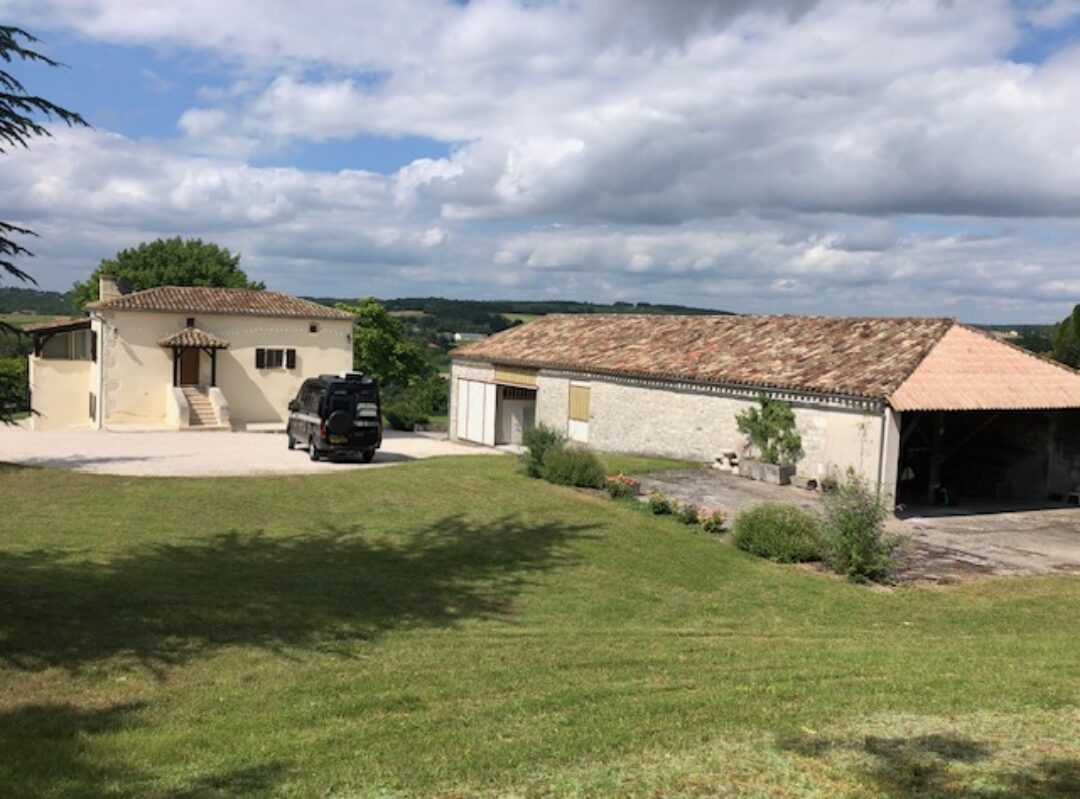Since we arrived in France at the end of June we’ve watched different crops grow, ripen and be harvested and now we’re seeing the last of those crops being gathered in. And on the farms around the house we’re staying in the tractors are out ploughing the rich brown fields for this winter’s crops. On our recent walks we’ve seen tobacco drying, not in the traditional wooden séchoirs but in large polytunnels, fields of maize and blackened sunflowers, gone over but not yet harvested, vines stripped of their grapes and their leaves turning different autumn hues and walnuts, every last one of them, being gathered off the ground by machine or by hand.
In pretty much every village there is an information board showing circular walks from the church or mairie, so we’re spoilt for choice, and many of the walks have a particular feature or point of interest on the way. A recent walk at Borrèze had the theme of water mills with the history of flour milling and the life of the millers explained on boards along the way. In a short space along the stream from the village there were at least 6 mills so it was obviously big business back in the day with the mills and occupation being handed down from father to son. Millers did not pay taxes ( which no doubt did not endear them to their neighbours) and earned their living from the exchange of grain and flour.

On another walk we found ourselves at the source of the River Coly. Having stopped for our picnic lunch along the riverside, we were curious when the river suddenly disappeared, or rather, began. The source is fed from the longest natural underground ‘siphon’ or conduit in Europe and during storms and heavy rain a column of water shoots up from this tranquil basin. The location is also a draw for divers and potholers who so far have explored about 5,760 metres along the underground channel.

Cèpe update – one proper specimen found on a recent walk. No wonder they’re so expensive….

Les Jardins Suspendus de Marqueyssac
Visiting gardens probably isn’t top of Joe’s list of things to do, but the allure of the high viewing platform we saw on our recent boat trip and the promise of some good walking persuaded us to visit the Hanging Gardens of Marqueyssac high above the Dordogne, and we’re certainly glad that we did. Although the history of the site goes back to the 17th century, the gardens were first laid out in the 1860s and then restored in 1996 and opened to the public. We’ve never seen so much box hedging and topiary in one place and we assume they must be thankfully free of box blight as it all looked wonderfully healthy. The gardens have several extensive walks, including a cliff walk leading to the lookout platform with views along the Dordogne and to the various Châteaux and villages we’ve visited in this area. Another walk leads through the highest points of the gardens and a third walk leads around the fabulous topiary gardens near the Château, which at this site is simply a nice grand house but of no particular historical significance.




Peacocks wander the grounds in this area and there is also an amazing 7.5 metre tall dinosaur skeleton – more specifically an allosaurus. We don’t recall having seen such an impressive skeleton outside of the Natural History Museum so it was a surprise to find it here. As the photos show we almost had the place to ourselves.







